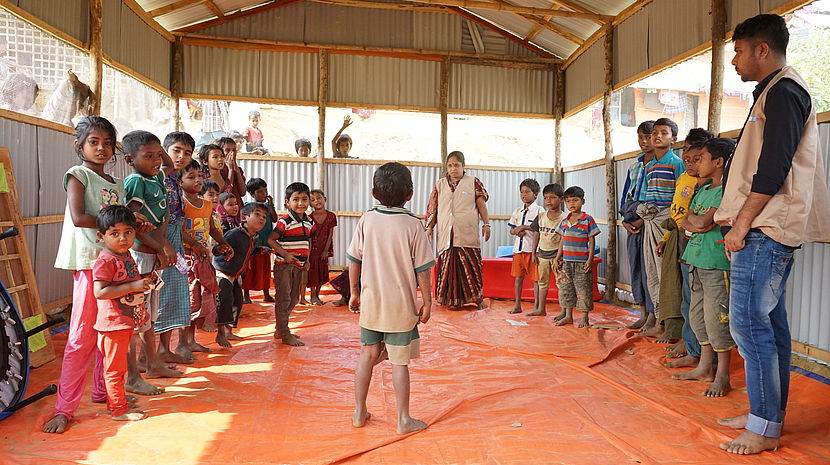15.05.2015 The second quake – an unforgettable experience

On 12th May I was at CBM partner HRDC (Hospital and Rehabilitation Centre for Disabled Children) to document our response to the first earthquake on April 25, and to record the journey of a child client from an affected district who’s now receiving free treatment. As Tuesday (and Wednesday) are surgical days here, I could find quite a few children who were injured during the quake and were on the list for surgical intervention. With the help of the nurses, I decided to make the story of Denish (who is 4), from Gorkha district, who sustained severe injuries to his right leg. (As their shelter collapsed, both the boy and his mother were buried in the debris. His mother later succumbed to her injuries… the boy was brought in an army hospital to Kathmandu.)
It was around 12 noon, I finished both the tasks and was waiting to have a word with the hospital management about the relief camps in the three CBM supported CBR districts. I had just entered the director’s room when a massive quake, almost of the same intensity as the April 25th, struck Nepal. Unlike the ongoing aftershocks, this one made an unusual noise. With me there were three other members in the room and within seconds all of us were out in the open. The tremors continued for more than 15 seconds…
Chaos
Suddenly, my mind went to four-year-old Denish whose story I had just recorded. Earlier, as I was speaking to Denish’s caretaker, the boy – who was waiting to receive a minor surgery – had fallen asleep in his bed in the medical ward. Before leaving them, I had asked his caretaker Sabina (who is herself only 19) to wait for the nurse’s call to take the boy inside the operation theatre). As I stood there, I don’t know why I thought I should check if Denish is still sleeping the ward. Instinctively, I rushed for the medical ward amidst a crowd of bellowing children and patients. As I ran, I could feel the ground was still shaking… there were patients being pulled out on their stretchers. As I entered the ward, there was no-one inside, little Denish lay there in his bed, oblivious of what was happening outside. I quickly picked him up and rushed outside. After a brief look at the chaos around, Denish went back to sleep in his caretaker’s arms…
By then, the four patients inside the operation theatre had also been evacuated. They were somehow rolled out by the nurses, with drip still inserted in their hand. Their caretakers came crying and screaming as their wards were brought out of the theatre. Mothers hugged their children and cried as they tried to wake them up. Fortunately, there was no patient with a major surgery during the time of the earthquake. As the crowd settled, there was yet another massive aftershock and the hospital immersed in a roar of cries and prayers. I had never experienced something like this before…
Shelter
HRDC staff brought the tents that CBM had provided as relief materials. The staff team pitched 10 of them, one after the other, in the open spaces within the hospital premises. Soon, all 72 patients and their caretakers were accommodated and given refreshment. Nurses attended to those who were still on intravenous drip and counselled the parents not to worry about anything. Gradually, mats were taken out of the medical and rehab wards to make preparations for all children and caretakers to sleep in the tents at night. Soon, a decision was taken to cancel all surgeries scheduled for the next day.
At 5 pm, a pall of silence descended on the hospital. As I left, I was reminded of how a fresh quake rattled the country that day. However, after the first earthquake and a series of aftershocks, we had gathered requisite resources and were better prepared to deal with the situation… I hope we continue to exhibit the same spirit and preparedness for future quakes.